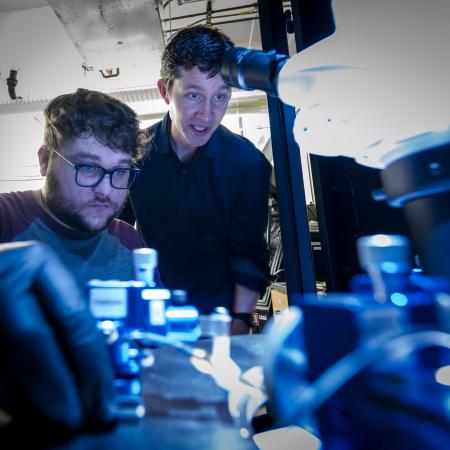General Physics with Calculus
PH 211 topics include Newtonian mechanics: an in-depth of treatment kinematics, relative motion, forces, work and energy, momentum and impulse.
PH 212 topics include uniform and non-uniform circular motion, gravitation, rotational motion, torque, angular momentum, oscillations, waves, wave optics and ray optics.
PH 213 topics include electric charge, electric force, electric fields, circuits with resistors, capacitors and inductors, inductance, magnetic fields, and electromagnetic waves.
These online courses are taught in a manner as similar to on-campus courses as possible. The students are polled before the beginning of term to find the most accommodating time for live Zoom sessions with interactive problem solving exercises. There are asynchronous alternatives for every assignment. Lecture videos are posted along with a suite of instructional videos on many topics.
Midterm exams are replaced with bi-weekly quizzes with a cumulative final exam. Proctoring is done with a variety of options: via Zoom at the regular class time, via Zoom at an evening hour, via Proctorio or in approved testing centers.
Labs consist of mostly hands-on activities with experiments built using readily available materials. There is no lab fee. Small lab groups interact via discussion boards and Zoom meetings with each other and with a trained lab TA with weekly scheduled meeting to accommodate availability.
PH 221, PH 222 and PH 223 constitute accompanying online recitation courses. These are not generally required but may be required by some majors.




